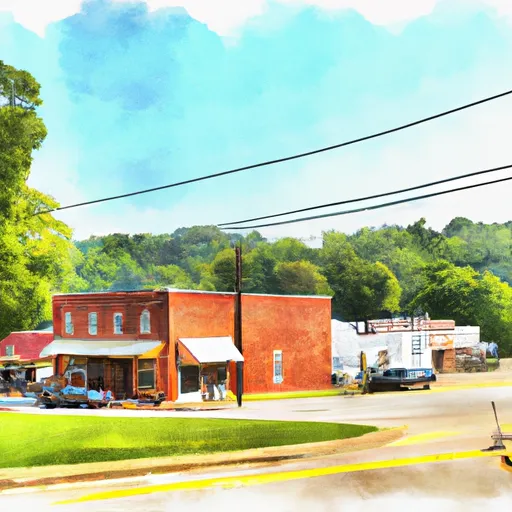-
 Snoflo Premium
Snoflo Premium
Get unlimited access to all our content
With no Ad interruptions! - Start Your Free Trial Login with existing account
Mc-Daniels
Eden Index
Climate
8.0
•
Recreation
4.3
•
Community
•
Safeguard
4.7/10

McDaniels, Kentucky is a small town located in Breckinridge County. It experiences a humid subtropical climate, characterized by hot, humid summers and mild winters. Summers are typically warm, with temperatures often reaching the high 80s to low 90s Fahrenheit. Winters are generally mild, with average temperatures ranging from the mid-30s to low 40s Fahrenheit. The area receives an average annual rainfall of around 47 inches.
Hydrologically, McDaniels is situated near Rough River Lake, a reservoir that spans approximately 5,100 acres. This provides ample opportunities for water-based activities such as boating, fishing, and swimming. The lake is known for its abundant fish population, including bass, crappie, and catfish, making it a popular destination for anglers.
Outdoor recreation opportunities in McDaniels extend beyond the lake and include hiking, camping, and birdwatching. The nearby Rough River Dam State Resort Park offers various trails for hikers and nature enthusiasts, showcasing the scenic beauty of the area. Additionally, the park provides camping facilities, picnic areas, and a golf course.
In summary, McDaniels, Kentucky offers a pleasant climate with warm summers and mild winters. Its proximity to Rough River Lake provides opportunities for water sports and fishing, while the surrounding parks and trails offer outdoor recreation options for nature lovers.
What is the Eden Index?
The Snoflo Eden Index serves as a comprehensive rating system for regions, evaluating their desirability through a holistic assessment of climate health, outdoor recreation opportunities, and natural disaster risk, acknowledging the profound impact of these factors on livability and well-being.
Climate Health Indicator (CHI): 8.0
Mc-Daniels receives approximately
1265mm of rain per year,
with humidity levels near 83%
and air temperatures averaging around
13°C.
Mc-Daniels has a plant hardyness factor of
6, meaning
plants and agriculture in this region thrive during a short period during spring and early summer. Most
plants will die off during the colder winter months.
By considering the ideal temperature range, reliable water supplies, clean air, and stable seasonal rain or snowpacks, the Climate Health Indicator (CHI) underscores the significance of a healthy climate as the foundation for quality living.
A healthy climate is paramount for ensuring a high quality of life and livability in a region, fostering both physical well-being and environmental harmony. This can be characterized by ideal temperatures, reliable access to water supplies, clean air, and consistent seasonal rain or snowpacks.
Weather Forecast
Streamflow Conditions
Area Rivers
Snowpack Depths
Reservoir Storage Capacity
Groundwater Levels
Recreational Opportunity Index (ROI): 4.3
The Recreational Opportunity Index (ROI) recognizes the value of outdoor recreational options, such as parks, hiking trails, camping sites, and fishing spots, while acknowledging that climate plays a pivotal role in ensuring the comfort and consistency of these experiences.
Access to outdoor recreational opportunities, encompassing activities such as parks, hiking, camping, and fishing, is crucial for overall well-being, and the climate plays a pivotal role in enabling and enhancing these experiences, ensuring that individuals can engage in nature-based activities comfortably and consistently.
Camping Areas
| Campground | Campsites | Reservations | Toilets | Showers | Elevation |
|---|---|---|---|---|---|
| Tims Ford State Park | 52 | 936 ft | |||
| Redstone Arsenal RV Military | None | 637 ft | |||
| Marshall County Park | None | 598 ft | |||
| Anderson Road - J. Percy Priest Reservoir | 10 | 535 ft | |||
| Ditto Landing City Campground | None | 567 ft | |||
| Poole Knobs - J. Percy Priest Reservoir | 88 | 537 ft | |||
| Sharon Johnston Park | 33 | 771 ft | |||
| Monte Sano State Park | 104 | 1,608 ft | |||
| Seven Points - J. Percy Priest Reservoir | 60 | 521 ft | |||
| Cedars of Lebanon State Park | 117 | 686 ft |
Nearby Ski Areas
Catastrophe Safeguard Index (CSI):
The Catastrophe Safeguard Index (CSI) recognizes that natural disaster risk, encompassing floods, fires, hurricanes, and tornadoes, can drastically affect safety and the overall appeal of an area.
The level of natural disaster risk in a region significantly affects safety and the overall livability, with climate change amplifying these risks by potentially increasing the frequency and intensity of events like floods, fires, hurricanes, and tornadoes, thereby posing substantial challenges to community resilience and well-being.
Community Resilience Indicator (CRI):
The Community Resilience Indicator (CRI) recognizes that education, healthcare, and socioeconomics are crucial to the well-being of a region. The CRI acknowledges the profound impact of these elements on residents' overall quality of life. By evaluating educational resources, healthcare accessibility, and economic inclusivity, the index captures the essential aspects that contribute to a thriving community, fostering resident satisfaction, equity, and social cohesion.

